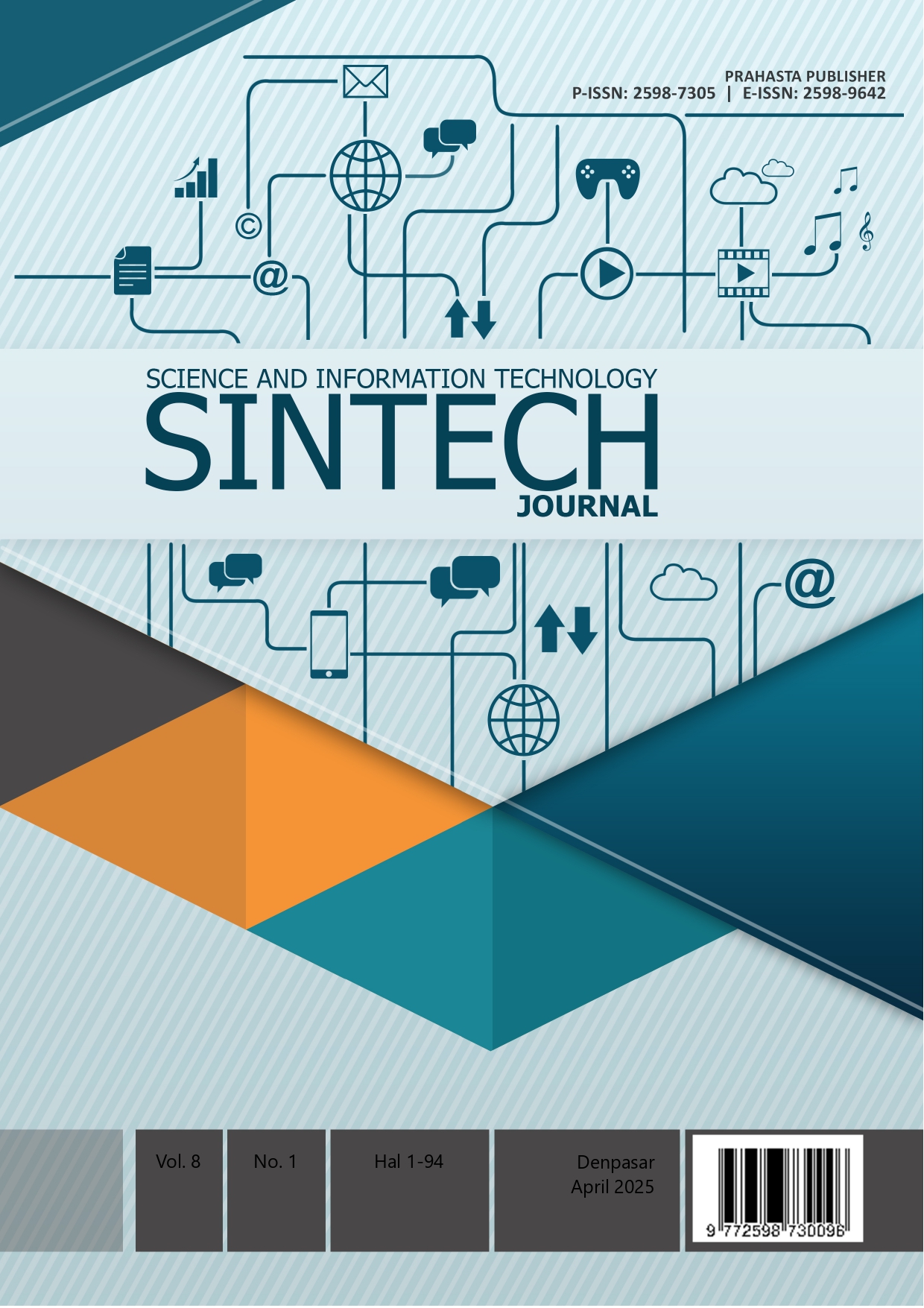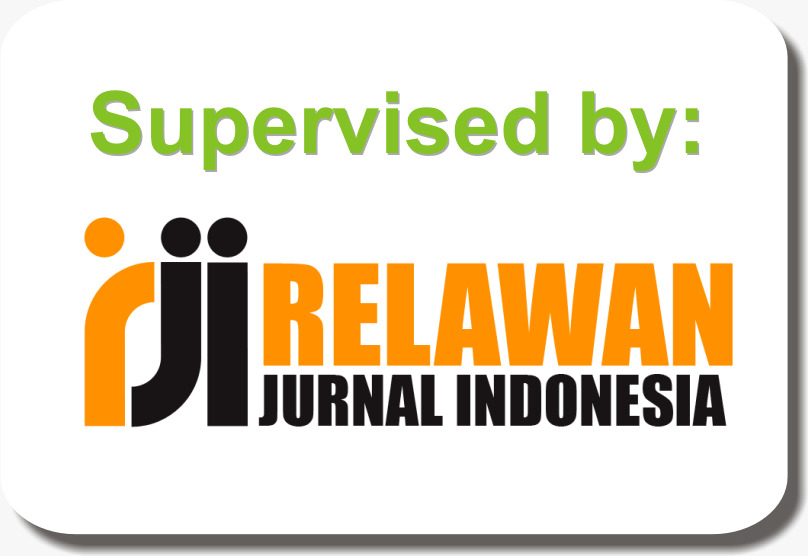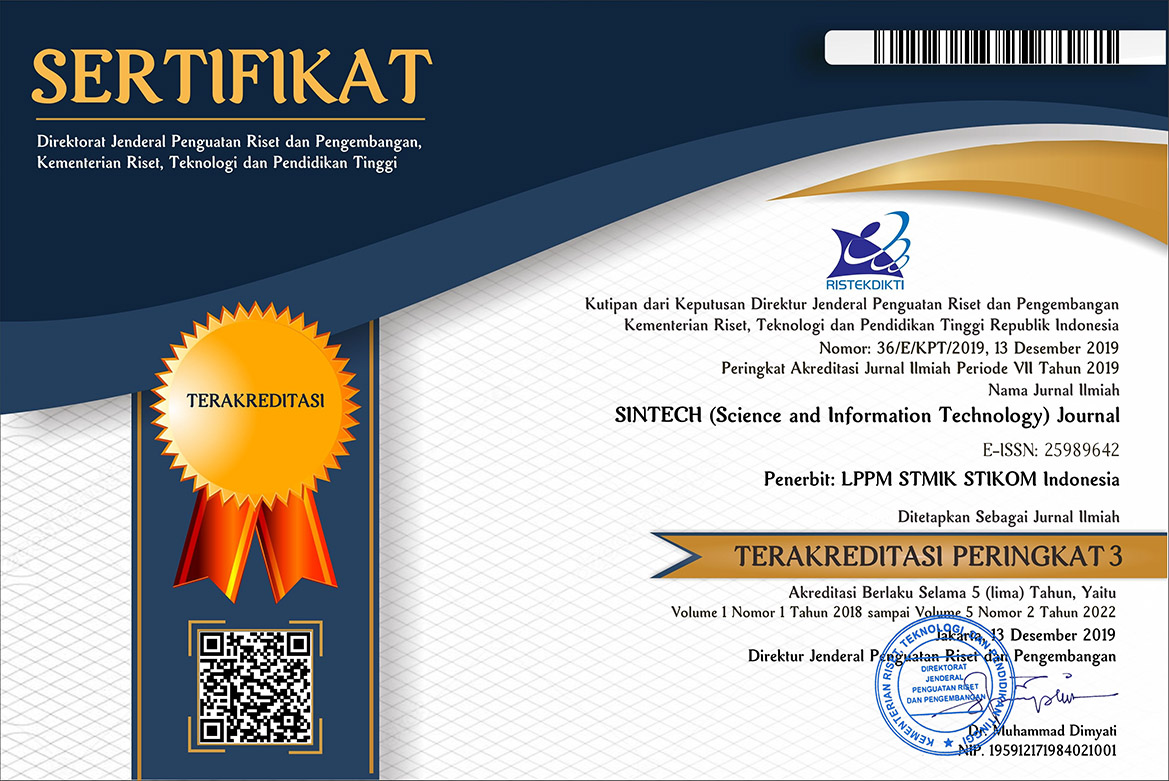EEG-Based Mental State Classification Using Statistical Features and Convolutional Neural Networks
DOI:
https://doi.org/10.31598/sintechjournal.v8i1.1802Keywords:
convolutional neural network, classification, electroencephalogram, mental state, statistical dataAbstract
The current research examines the effectiveness of Convolutional Neural Networks (CNNs) in classifying mental states from EEG data through statistical features. Conventional EEG classification frequently depends on raw signals or picture transformations, which may insufficiently utilize feature-level differentiations. This research presents a direct statistical feature-based CNN methodology to enhance classification accuracy while minimizing computational complexity. Electroencephalogram data were obtained from 10 subjects utilizing the Muse Headband, resulting in 200 samples (100 in each category). To reduce training instability resulting from the constrained dataset, augmentation approaches expanded the sample size to 1000. The optimized CNN model (32 units, learning rate 0.01, 90 epochs) attained 98% accuracy using enhanced data, illustrating the effectiveness of augmentation in stabilizing training. Comparative analysis with prior studies validates that CNNs can effectively categorize statistical EEG data; however, subsequent research should investigate hybrid architectures (CNN-GRU, Transformers) to enhance temporal modeling. These findings enhance EEG-based mental state classification by demonstrating the application of statistical features in deep learning models and highlighting the significance of dataset size and augmentation.
References
[1] J. J. Bird, D. R. Faria, L. J. Manso, A. Ekárt, and C. D. Buckingham, “A deep evolutionary approach to bioinspired classifier optimisation for brain-machine interaction,” Complexity. Accessed: Dec. 13, 2023. [Online]. Available: https://dx.doi.org/10.1155/2019/4316548
[2] A. Craik, Y. He, and J. L. Contreras-Vidal, “Deep learning for electroencephalogram (EEG) classification tasks: A review,” 2019. doi: 10.1088/1741-2552/ab0ab5.
[3] N. Kumari, S. Anwar, and V. Bhattacharjee, “A Comparative Analysis of Machine and Deep Learning Techniques for EEG Evoked Emotion Classification,” Wireless Personal Communications. Accessed: Dec. 13, 2023. [Online]. Available: https://link.springer.com/article/10.1007/s11277-022-10076-7
[4] Gst. A. V. M. Giri and M. L. Radhitya, “Electroencephalogram-Based Emotion Classification Using Machine Learning and Deep Learning Techniques,” IJCCS (Indonesian Journal of Computing and Cybernetics Systems, vol. 18, no. 3, pp. 1–5, Jun. 2024, doi: 10.22146/ijccs.xxxx.
[5] S. M. Omar, M. Kimwele, A. Olowolayemo, and D. M. Kaburu, “Enhancing EEG signals classification using LSTM-CNN architecture,” Engineering Reports, vol. 6, no. 9, Sep. 2024, doi: 10.1002/eng2.12827.
[6] N. Jiwani, K. Gupta, M. H. U. Sharif, N. Adhikari, and N. Afreen, “A LSTM-CNN Model for Epileptic Seizures Detection using EEG Signal,” in 2022 2nd International Conference on Emerging Smart Technologies and Applications, eSmarTA 2022, Institute of Electrical and Electronics Engineers Inc., 2022. doi: 10.1109/eSmarTA56775.2022.9935403.
[7] C. Lee and J. An, “LSTM-CNN model of drowsiness detection from multiple consciousness states acquired by EEG,” Expert Syst Appl, vol. 213, Mar. 2023, doi: 10.1016/j.eswa.2022.119032.
[8] B. Chakravarthi, S. C. Ng, M. R. Ezilarasan, and M. F. Leung, “EEG-based emotion recognition using hybrid CNN and LSTM classification,” Front Comput Neurosci, vol. 16, Oct. 2022, doi: 10.3389/fncom.2022.1019776.
[9] A. Shoeibi et al., “Automatic Diagnosis of Schizophrenia in EEG Signals Using CNN-LSTM Models,” Front Neuroinform, vol. 15, Nov. 2021, doi: 10.3389/fninf.2021.777977.
[10] S. Gao, J. Yang, T. Shen, and W. Jiang, “A Parallel Feature Fusion Network Combining GRU and CNN for Motor Imagery EEG Decoding,” Brain Sci, vol. 12, no. 9, 2022, doi: 10.3390/brainsci12091233.
[11] H. J. Ahn, D. H. Lee, J. H. Jeong, and S. W. Lee, “Multiscale Convolutional Transformer for EEG Classification of Mental Imagery in Different Modalities,” IEEE Transactions on Neural Systems and Rehabilitation Engineering, vol. 31, 2023, doi: 10.1109/TNSRE.2022.3229330.
[12] Y. Song, Q. Zheng, B. Liu, and X. Gao, “EEG Conformer: Convolutional Transformer for EEG Decoding and Visualization,” IEEE Transactions on Neural Systems and Rehabilitation Engineering, vol. 31, 2023, doi: 10.1109/TNSRE.2022.3230250.
[13] D. Klepl, M. Wu, and F. He, “Graph Neural Network-Based EEG Classification: A Survey,” IEEE Transactions on Neural Systems and Rehabilitation Engineering, vol. 32, 2024, doi: 10.1109/TNSRE.2024.3355750.
[14] P. Zhong, D. Wang, and C. Miao, “EEG-Based Emotion Recognition Using Regularized Graph Neural Networks,” IEEE Trans Affect Comput, vol. 13, no. 3, 2022, doi: 10.1109/TAFFC.2020.2994159.
[15] W. Abbas and N. A. Khan, “DeepMI: Deep Learning for Multiclass Motor Imagery Classification,” in Proceedings of the Annual International Conference of the IEEE Engineering in Medicine and Biology Society, EMBS, 2018. doi: 10.1109/EMBC.2018.8512271.
[16] V. J. Lawhern, A. J. Solon, N. R. Waytowich, S. M. Gordon, C. P. Hung, and B. J. Lance, “EEGNet: A compact convolutional neural network for EEG-based brain-computer interfaces,” J Neural Eng, vol. 15, no. 5, 2018, doi: 10.1088/1741-2552/aace8c.
[17] J. J. Bird, L. J. Manso, E. P. Ribeiro, A. Ekart, and D. R. Faria, “A Study on Mental State Classification using EEG-based Brain-Machine Interface,” 9th International Conference on Intelligent Systems 2018: Theory, Research and Innovation in Applications, IS 2018 - Proceedings. Accessed: Dec. 13, 2023. [Online]. Available: https://ieeexplore.ieee.org/document/8710576/
[18] G. Ayu, V. Mastrika Giri, N. Agus, S. Er, I. Ketut, and G. Suhartana, “Application of Gated Recurrent Unit in Electroencephalogram (EEG)-Based Mental State Classification,” 2025. [Online]. Available: http://jurnal.polibatam.ac.id/index.php/JAIC
[19] A. Khoirunnisa and N. G. Ramadhan, “Improving malaria prediction with ensemble learning and robust scaler: An integrated approach for enhanced accuracy,” JURNAL INFOTEL, vol. 15, no. 4, 2023, doi: 10.20895/infotel.v15i4.1056.
[20] G. A. V. Giri, N. A. S. ER, and I. K. G. Suhartana, “Application of Gated Recurrent Unit in Electroencephalogram (EEG)-Based Mental State Classification,” Journal of Applied Informatics and Computing (JAIC), vol. 9 No. 1, 2025, [Online]. Available: http://jurnal.polibatam.ac.id/index.php/JAIC.
Downloads
Published
How to Cite
Issue
Section
License
Copyright (c) 2025 Gst Ayu Vida Mastrika Giri, Cokorda Pramartha, I Ketut Gede Suhartana

This work is licensed under a Creative Commons Attribution-NonCommercial-ShareAlike 4.0 International License.











1.png)




